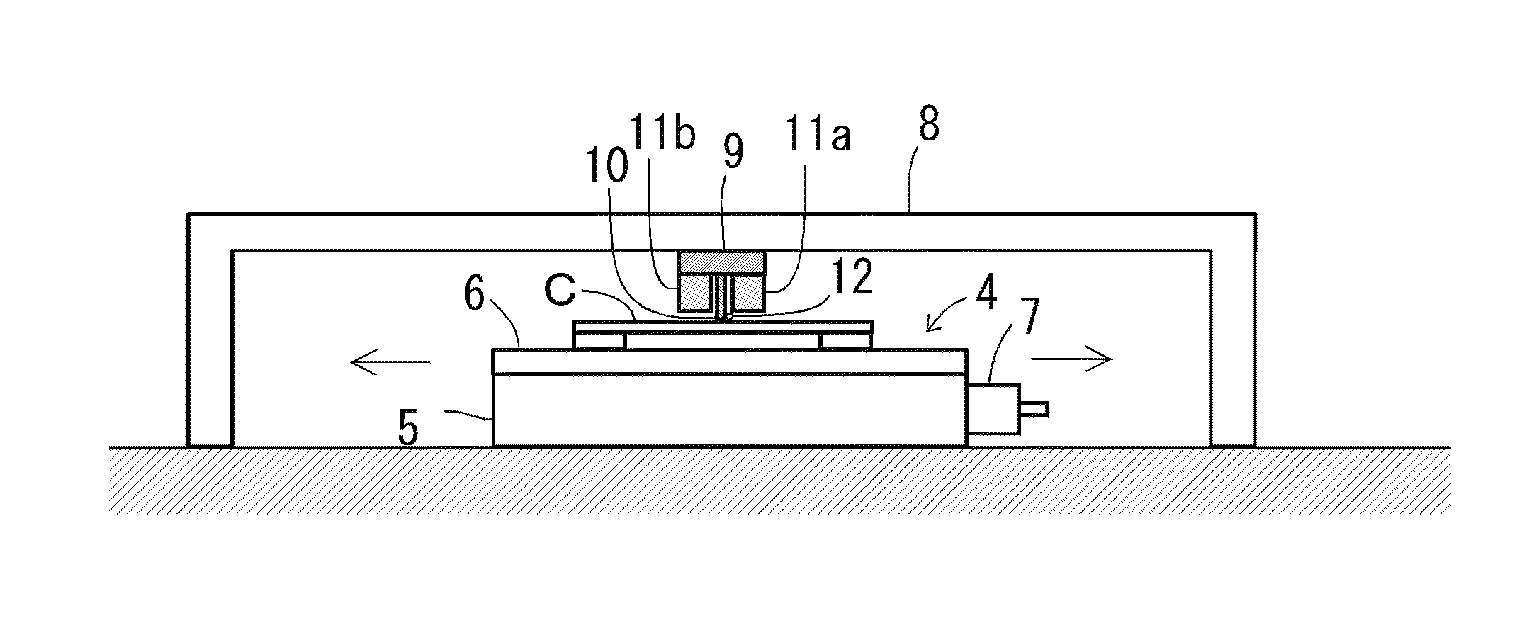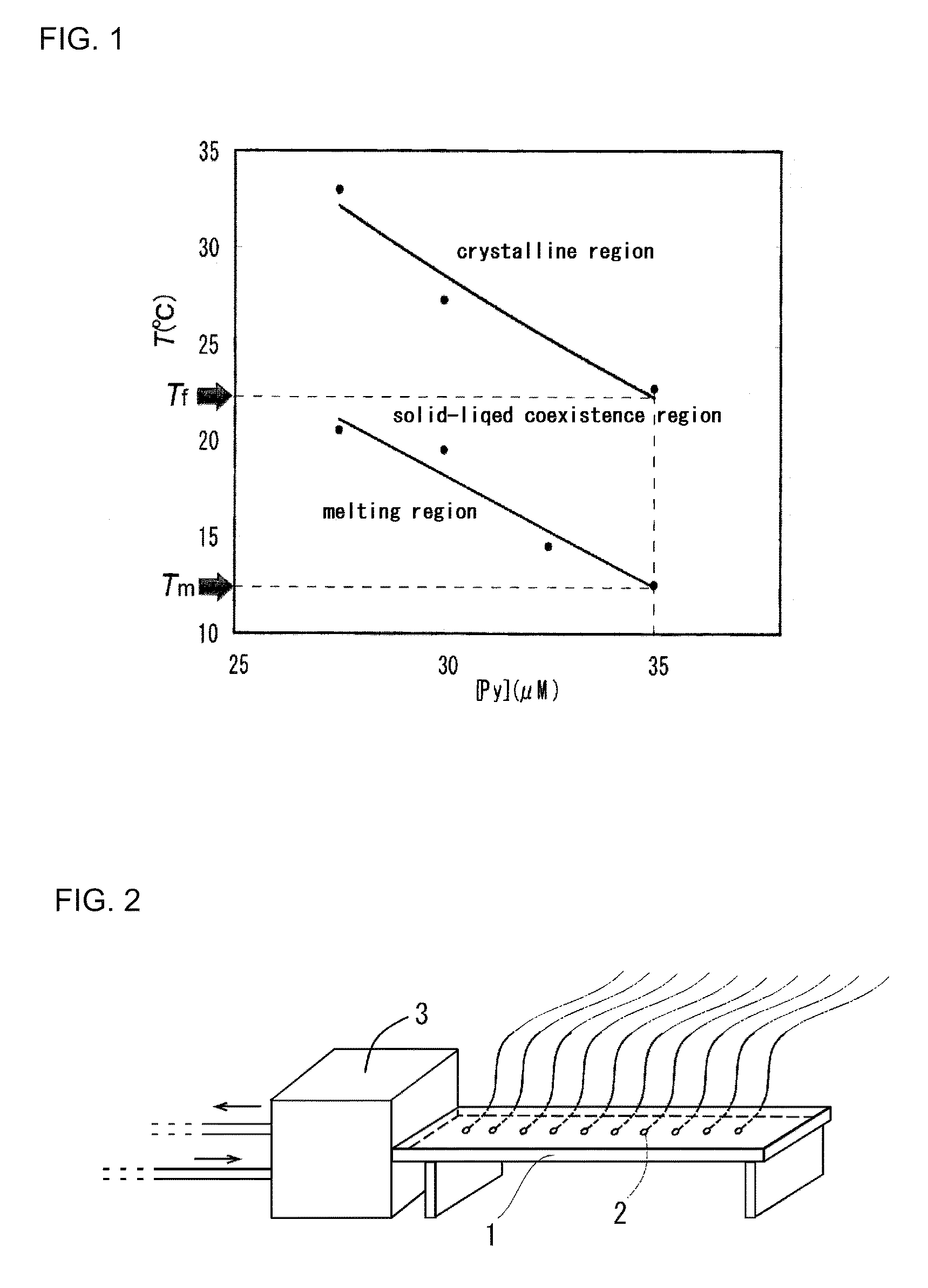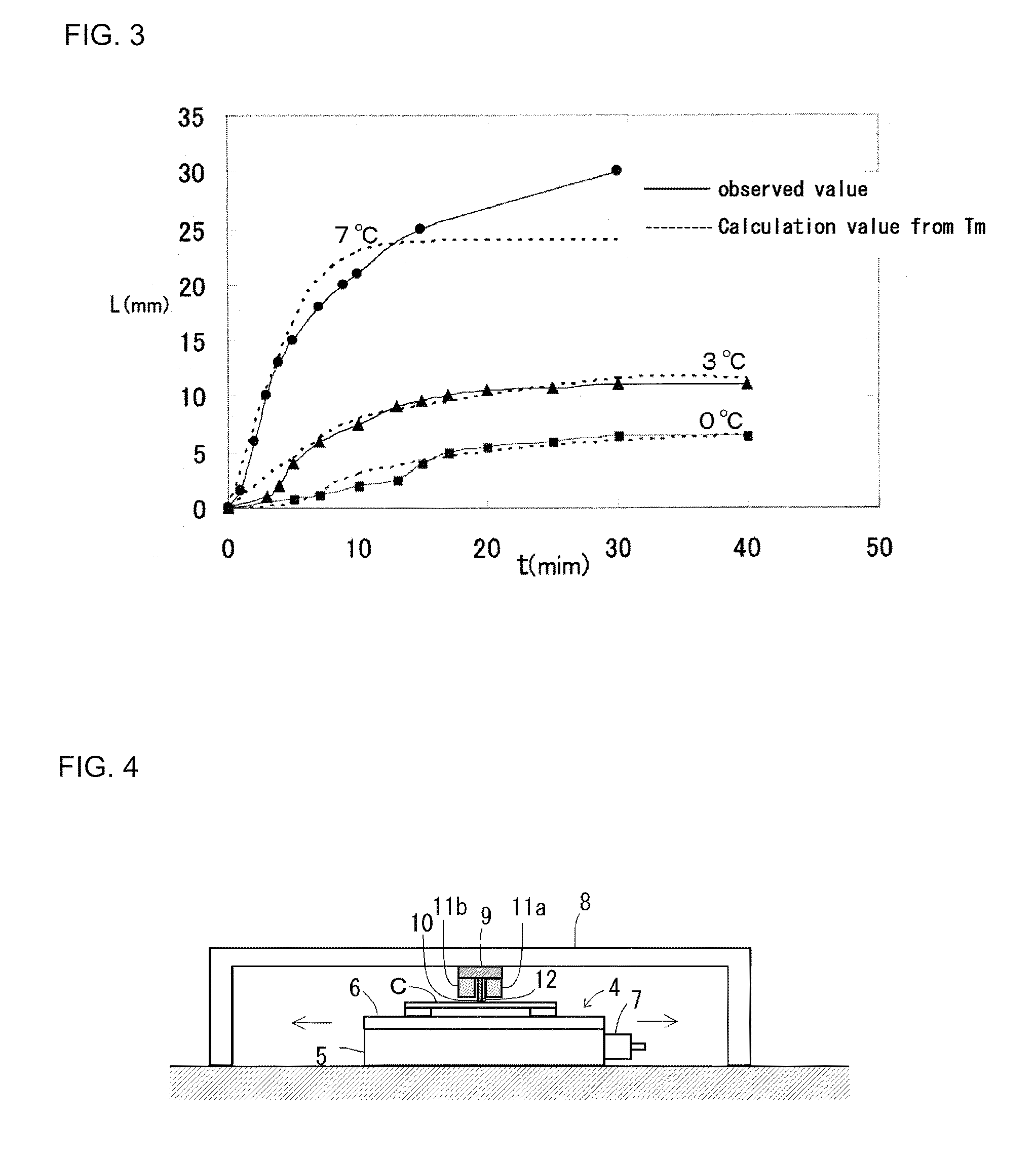Process for producing colloidal crystal and colloidal crystal
a colloidal crystal and colloidal crystal technology, applied in the field of colloidal crystals, can solve the problems of difficult precipitation process, unevenness in colloidal crystals, and difficulty in a good single crystallinity area for a long time, and achieve the effect of high accuracy of wavelength diffracted and excellent diffraction efficiency
- Summary
- Abstract
- Description
- Claims
- Application Information
AI Technical Summary
Benefits of technology
Problems solved by technology
Method used
Image
Examples
example 1-1
[0091]In Example 1-1, a gigantic colloidal single crystal was prepared from fine colloidal polycrystals by a zone melting process to be shown later.
[0092]First, silica colloidal particles KE-W10 (diameter: 0.11±0.01 μm, specific gravity: 2.1) manufactured by Nippon Shokubai Co., Ltd. were purified using dialysis by a semipermeable membrane, and an ion-exchange process using an ion-exchange resin. A silica colloid from which ions were thus removed was adjusted so that a volume fraction (φ)=0.050 was set, and pyridine was added thereto so that a pyridine concentration was set to produce 50 μmol / L to produce a colloidal polycrystal dispersion. When the colloidal polycrystal dispersion was left at room temperature, fine colloidal polycrystals glitteringly shining were observed with the naked eye. The colloidal polycrystal dispersion was separately put into the quartz cell. The fine colloidal polycrystals were formed, and the colloidal polycrystal dispersion was then cooled. When a tempe...
examples 1-2 to 1-4
[0099]In Examples 1-2 to 1-4, colloidal crystals were prepared at the moving speed of the Peltier element 9 which is different from that in the case of Example 1-1 (that is, 18 mm / min in Example 1-2, 30 mm / min in Example 1-3, and 42 ram / min in Example 1-4). Other preparation conditions are the same as those in Example 1-1. The results are shown in FIG. 6. FIG. 6 shows that the larger a moving speed ν of a cooling portion (that is, a melting area of colloidal polycrystals) is, the smaller a crystal size is.
[0100]In the preparation of the colloidal crystals of Example 1-1 (that is, ν=2 mm / min), a surface temperature of a cell opposite to the Peltier element 9 was measured using an infrared type thermography device (TH6300 type manufactured by NEC / Avio Corporation). The results are shown in FIG. 7. FIG. 7A shows temperature distribution images of every 5 minutes. FIG. 7B shows a relation between a temperature and a position x (a distance from a left end of a cell) on a horizontal line ...
example 2-1
[0102]In Example 2-1, fluorescence polystyrene particles were used as imitation impurities, and an exclusion test of impurity particles by a zone melting process was conducted. Hereinafter, the test process will be described in detail.
[0103]That is, fluorescence polystyrene fine particles (particle diameter=100 nm) as model impurities were added to a dispersion liquid in which pyridine of 50 μmol / L was added to purified silica colloid (particle diameter=100 nm, particle concentration=5 vol %) so that a particle concentration=0.02 vol % was set. The colloidal polycrystal dispersion thus prepared was an assembly of microcrystals of 1 mm or less. The colloidal polycrystal dispersion was put into a quartz cell of 1×1×4.5 cm. The zone melting device used in Example 1-1 was used. Zone melting treatment was conducted by moving the Peltier element 9 leftward by about 3 cm from the right end of a cell at a speed / of 2 mm / min at 25° C. while controlling the Peltier element 9 so that the tip of...
PUM
| Property | Measurement | Unit |
|---|---|---|
| length | aaaaa | aaaaa |
| width | aaaaa | aaaaa |
| moving speed | aaaaa | aaaaa |
Abstract
Description
Claims
Application Information
 Login to View More
Login to View More - R&D
- Intellectual Property
- Life Sciences
- Materials
- Tech Scout
- Unparalleled Data Quality
- Higher Quality Content
- 60% Fewer Hallucinations
Browse by: Latest US Patents, China's latest patents, Technical Efficacy Thesaurus, Application Domain, Technology Topic, Popular Technical Reports.
© 2025 PatSnap. All rights reserved.Legal|Privacy policy|Modern Slavery Act Transparency Statement|Sitemap|About US| Contact US: help@patsnap.com



